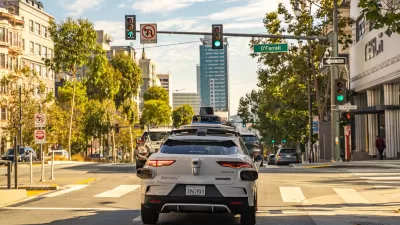New cars will be required to include automatic detection and braking technology for vehicles and pedestrians by 2029.

The U.S. Department of Transportation’s National Highway Traffic Safety Administration (NHTSA) issued its final update to federal regulations that govern vehicle design, mandating new features to protect pedestrians and prevent crashes. The new Federal Motor Vehicle Safety Standard calls for automatic emergency braking (AEB) technology for vehicles and pedestrians on all passenger cars and light trucks by 2029.
According to a press release from the NHTSA, “The new standard requires all cars be able to stop and avoid contact with a vehicle in front of them up to 62 miles per hour and that the systems must detect pedestrians in both daylight and darkness. In addition, the standard requires that the system apply the brakes automatically up to 90 mph when a collision with a lead vehicle is imminent, and up to 45 mph when a pedestrian is detected.” The technology is designed to detect pedestrians and vehicles during daylight and darker conditions.
The agency estimates this could save over 360 lives each year, based on fatality statistics. The standard fulfills a provision in the Bipartisan Infrastructure Law and advances the National Roadway Safety Strategy, a federal effort to reduce traffic fatalities and injuries.
FULL STORY: NHTSA Finalizes Key Safety Rule to Reduce Crashes and Save Lives

Trump Administration Could Effectively End Housing Voucher Program
Federal officials are eyeing major cuts to the Section 8 program that helps millions of low-income households pay rent.

Planetizen Federal Action Tracker
A weekly monitor of how Trump’s orders and actions are impacting planners and planning in America.

Ken Jennings Launches Transit Web Series
The Jeopardy champ wants you to ride public transit.

‘Smart Surfaces’ Policy Guide Offers Advice for Building and Maintaining Urban Tree Canopies
Healthy, robust tree canopies can reduce the impacts of extreme heat and improve air quality.

New Jersey Lawsuit Targets Rent-Setting Algorithms
The state of New Jersey is taking legal action against landlords and companies that engage in what the state’s Attorney General alleges is illegal rent fixing.

Washington Legislature Passes Rent Increase Cap
A bill that caps rent increases at 7 percent plus inflation is headed to the governor’s desk.
Urban Design for Planners 1: Software Tools
This six-course series explores essential urban design concepts using open source software and equips planners with the tools they need to participate fully in the urban design process.
Planning for Universal Design
Learn the tools for implementing Universal Design in planning regulations.
Heyer Gruel & Associates PA
Ada County Highway District
Institute for Housing and Urban Development Studies (IHS)
City of Grandview
Harvard GSD Executive Education
Toledo-Lucas County Plan Commissions
Salt Lake City
NYU Wagner Graduate School of Public Service





























